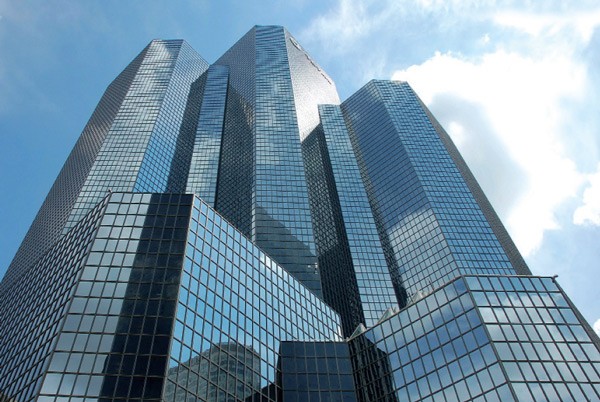What is safety glass?
Safety glass is produced from 02 (or more depending on needs) grafted glass layer, which is linked together by layer of Polyvinyl butyral film (PVB film has durability, toughness) between glass panels and Created by the exact combination of pressure and heat.
Safety laminated glass is produced on modern and advanced technology lines according to European standards. The production process is a closed loop, the stages are operated according to the programmed parameters, pre-installed and controlled by the central control unit. Safety glass is a glass product with stable quality, durability and long life.
Depending on the purpose and demand of use, the glass is made from different types of PVB films and from 02 or more glass panels of the following types of glass to create perfect safety glass products to meet the requirements next:
Glasses: clear glass, stained glass, reflective glass, reflective glass, mesh glass, toughened glass with thickness from 3mm to 19mm.
Film PVB: transparent film, color film, color composite film, decorative pattern with common standard thickness: 0.38mm.
Laminated safety glass is suitable for construction of large-scale projects, ensuring safety, security, energy saving, avoiding risks during use. The use of multi-layer safety glass has proven to be safe in the event of incidents, and therefore it will be advantageous in the installation and decoration of the buildings in the next year.

Building uses safety glazing (Artwork)
Operating characteristics, operational features and technological processes:
Step 1: The full plate glass will be passed through the washing and drying device to clean the two glass surfaces. The glass panels after passing the washing system with pure water are passed through the automatic drying system and will be transferred through the glass chamber after having cleaned the two glass surfaces.
Step 2: The first glass is placed on the positioning table, then the PVB Film is covered on the glass surface and cut with the size of the glass.
Step 3: The second sheet of glass after being carried out as in Step 1 and Step 2 will be put into the positioning tables and placed on the first sheet coated with Film PVB in Step 2 so that the two sheets are temporarily bonded together.
Step 4: The glass panels assembled in step 3 will be passed through the automatic pressing system by rollers to squeeze the two sheets of glass together and will be steamed 01 times at 1400C to help the glass stick more together and will be moved to the position of the heating stand.
Step 5: The glass shelves will be put into the system of compression and heating at a temperature of 1500C for about 3 hours depending on the thickness of the glass panels, after reaching the specified temperature, it will be cooled to zero uniform gas and glass will be removed from the compression and heating system.
Step 6: Glass products completed through 05 above stages will be strictly checked again before warehousing finished products. Products that do not meet the technical requirements will be removed.
After completing the above 6 steps, we get the perfect safety glass product.
According to: vatlieuxaydung.org.vn:



